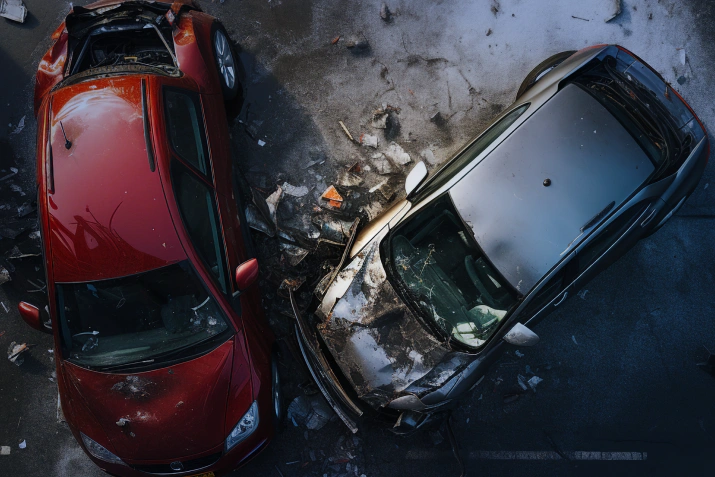When a car accident occurs, determining fault is essential for deciding who is responsible for damages. In many cases, however, both parties may share some fault. California’s comparative fault system addresses this by allowing victims to recover damages even if they were partially responsible for the accident. Understanding how comparative fault affects car accident claims can help victims protect their rights and maximize compensation. Seeking guidance from a Los Angeles car accident attorney can ensure that fault is fairly assessed and that victims receive the compensation they deserve.
What is Comparative Fault?
Comparative fault, also known as comparative negligence, is a legal doctrine used to allocate fault between multiple parties involved in an accident. Under this system, each party is assigned a percentage of fault based on their contribution to the accident. Their percentage of fault then reduces the compensation awarded to a victim.
California follows a pure comparative fault system, meaning a victim can recover damages even if they are 99% at fault. However, the total compensation is reduced by their degree of fault. For instance, if a victim is awarded $100,000 but is found 30% responsible for the accident, they would receive only $70,000. Consulting a Los Angeles car accident lawyer is critical for ensuring that fault is assessed accurately and that the victim’s compensation is not unfairly diminished.
How Comparative Fault Impacts Car Accident Claims
Determining fault in a car accident case is rarely straightforward. Multiple factors, such as traffic violations, driver behavior, and environmental conditions, are analyzed to establish liability. Insurance companies and legal teams review evidence such as police reports, eyewitness statements, surveillance footage, and expert testimony to determine how much responsibility each party holds.
Consider this example:
- One driver runs a red light and collides with another vehicle. However, the other driver was speeding at the time of the collision, so both parties contributed to the accident.
- The court may determine that the driver who ran the red light is 70% at fault, while the speeding driver is 30% at fault.
If the speeding driver sustains damages worth $100,000, their compensation would be reduced by 30%, leaving them with $70,000. Cases like this highlight the importance of working with an experienced Los Angeles car accident attorney who can gather evidence and present a strong argument to minimize fault and maximize compensation.
Common Factors Considered in Comparative Fault Cases
Several factors play a role in determining comparative fault in car accident cases, including:
- Traffic Violations: Violations like running a red light, speeding, or failing to yield can increase a driver’s share of fault.
- Distracted Driving: Texting, phone use, or other distractions can lead to negligence and a higher fault percentage.
- Reckless or Aggressive Driving: Tailgating, changing lanes without signaling, and other reckless behaviors may increase liability.
- Failure to Maintain Control: Drivers who lose control due to speeding or poor vehicle maintenance may be held partially responsible.
Since these factors can complicate fault determinations, involving a Los Angeles car accident lawyer helps ensure that evidence is properly analyzed and presented.
Insurance Implications in Comparative Fault Cases
Comparative fault can significantly impact insurance claims and settlement negotiations. Insurance companies often try to assign a higher percentage of fault to the victim to reduce their payout. This tactic lowers the victim’s compensation, even if they deserve more.
For example, if an insurance company determines that a victim is 40% at fault in a $50,000 claim, the victim would only be eligible to receive $30,000. Without legal representation, victims may accept lower settlements without realizing they have the right to challenge these fault allocations. A skilled Los Angeles car accident attorney can negotiate aggressively with insurance companies to protect victims from unfair fault assignments.
Fighting Unfair Fault Allocation
Insurance companies often use aggressive tactics to reduce payouts by assigning more fault to the victim. To fight back against unfair fault allocation, accident victims should:
- Document the Accident Scene: Take photos, gather witness statements, and preserve any available video evidence.
- Seek Medical Attention Immediately: A medical report can connect the injuries directly to the accident, strengthening the claim.
- Avoid Speaking with Insurance Adjusters Without Legal Representation: Anything said to an insurance company can be used to reduce a claim.
A Los Angeles car accident lawyer can help victims collect critical evidence and challenge insurance companies’ attempts to shift blame unfairly.
Why Legal Representation is Crucial in Comparative Fault Cases
Handling a comparative fault case without legal expertise can disadvantage victims significantly. Car accident claims involving shared fault require strong negotiation skills and a deep understanding of California’s comparative fault laws. A Los Angeles car accident attorney can build a solid case, minimize the percentage of fault assigned to the victim, and maximize the compensation awarded.
Conclusion: Protect Your Rights with Legal Expertise
Navigating comparative fault in car accident claims can be complex, especially when multiple parties are involved. Understanding how fault is assigned and how it affects compensation is critical for protecting one’s legal rights. Working with JML Law, APLC provides accident victims with the legal experience and advocacy needed to pursue a fair outcome. Consulting a Los Angeles car accident lawyer can make a significant difference in securing rightful compensation for those seeking assistance.









